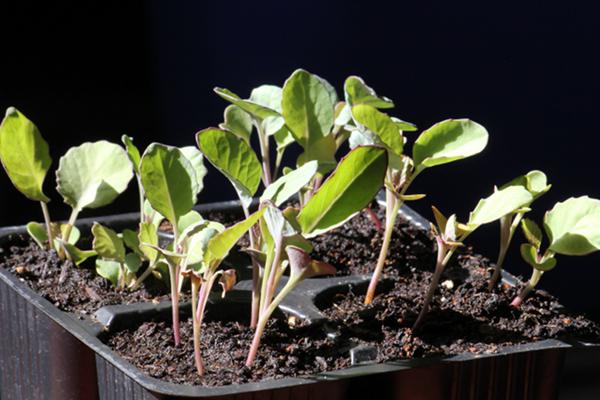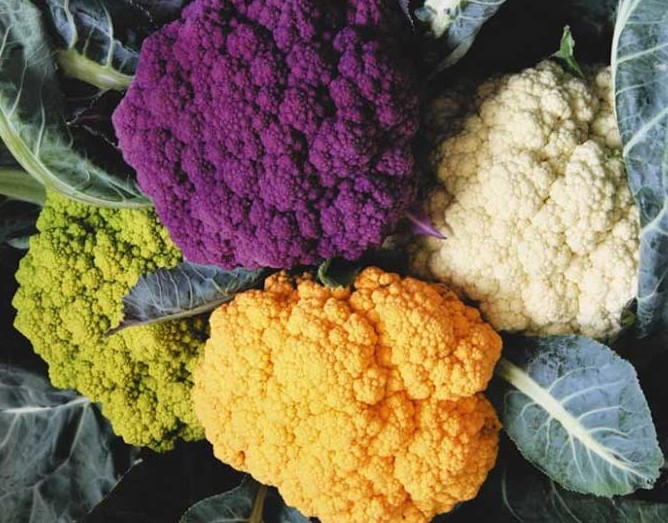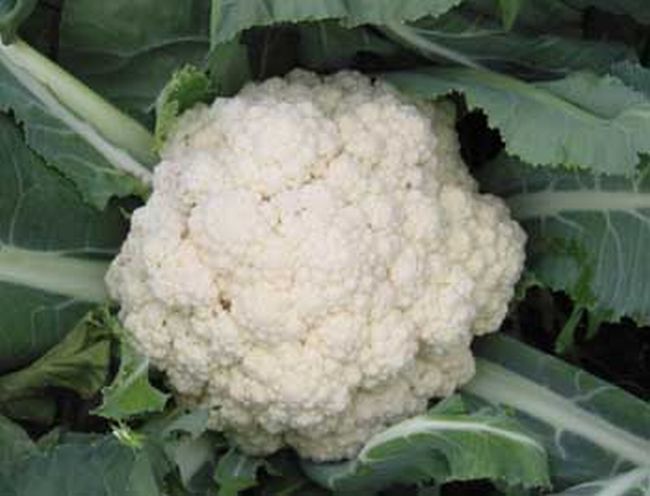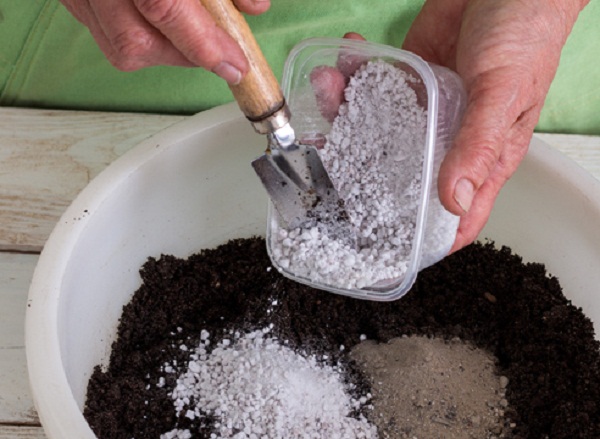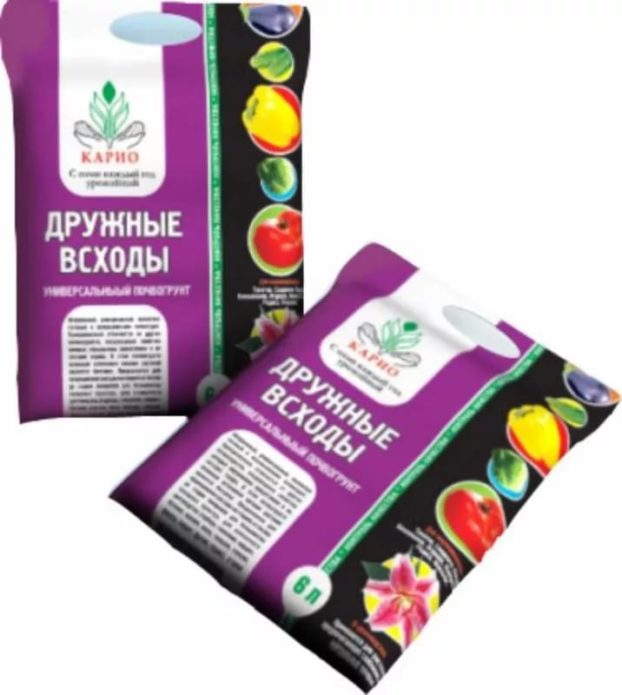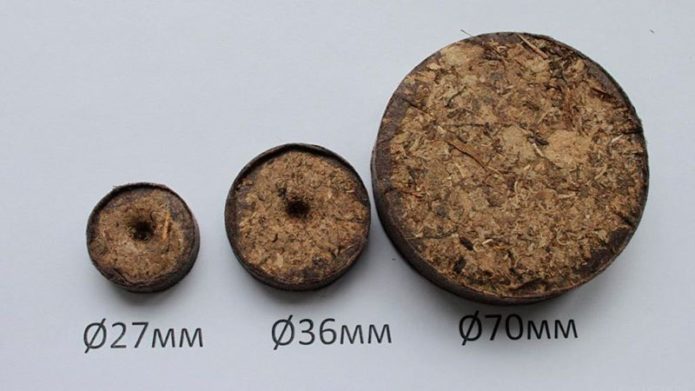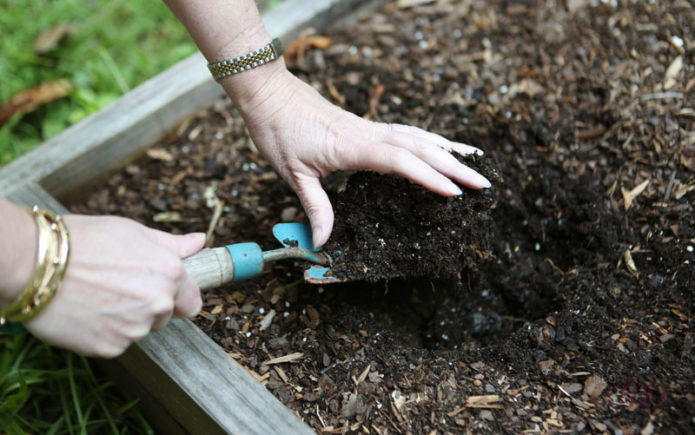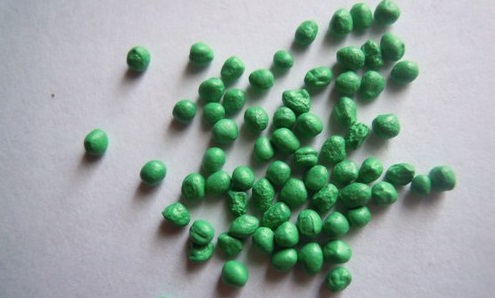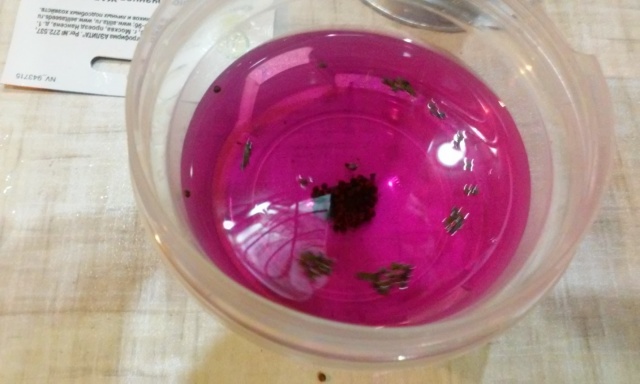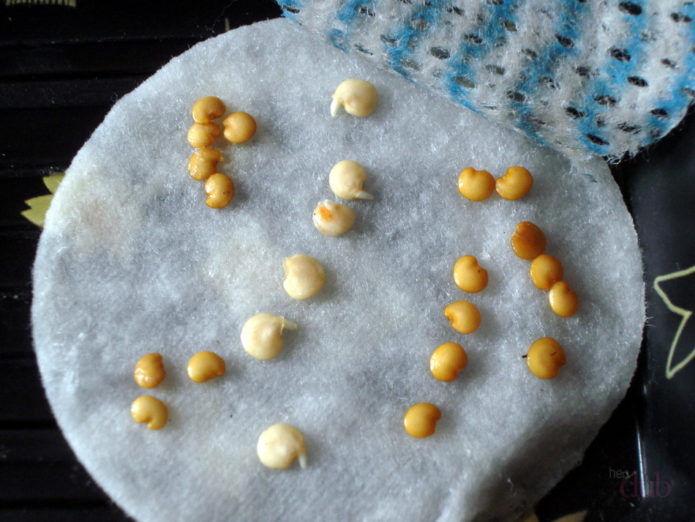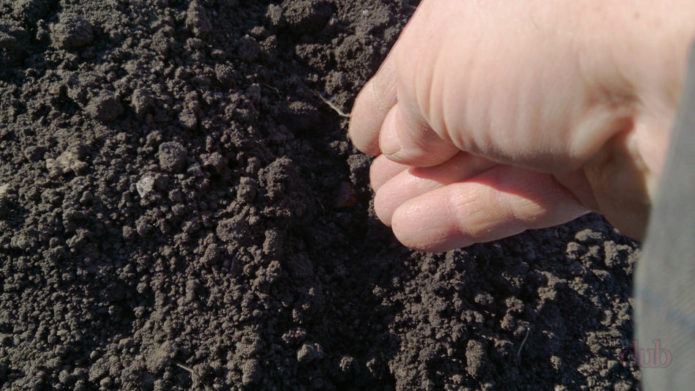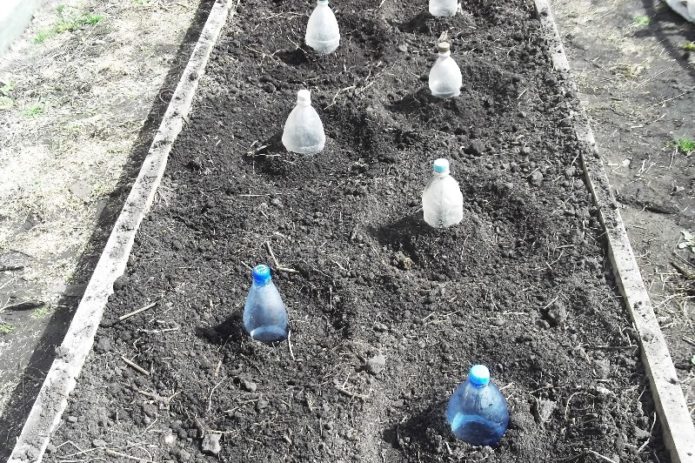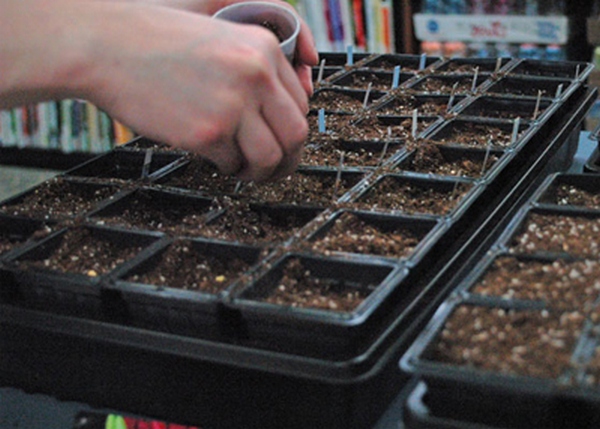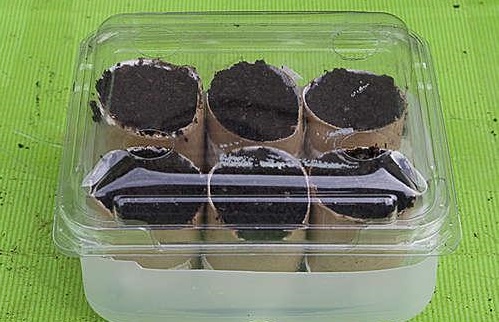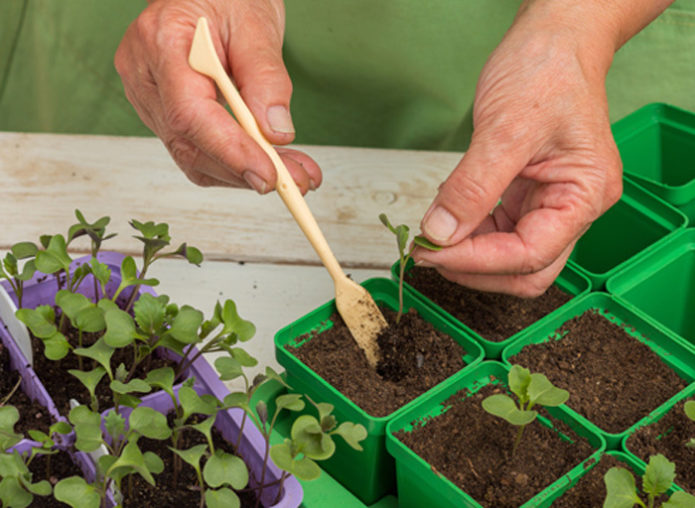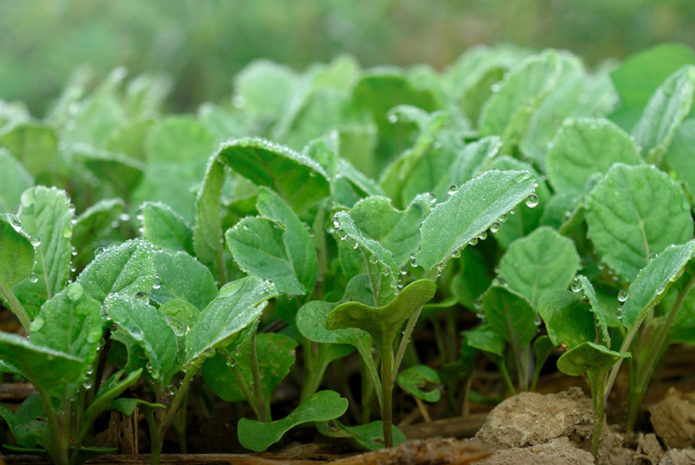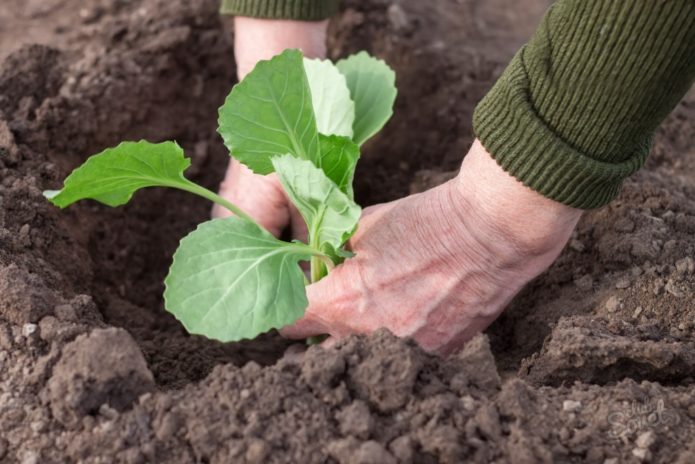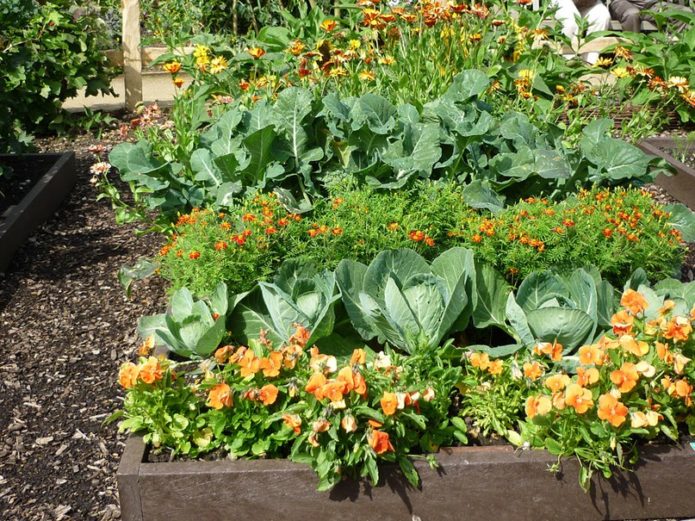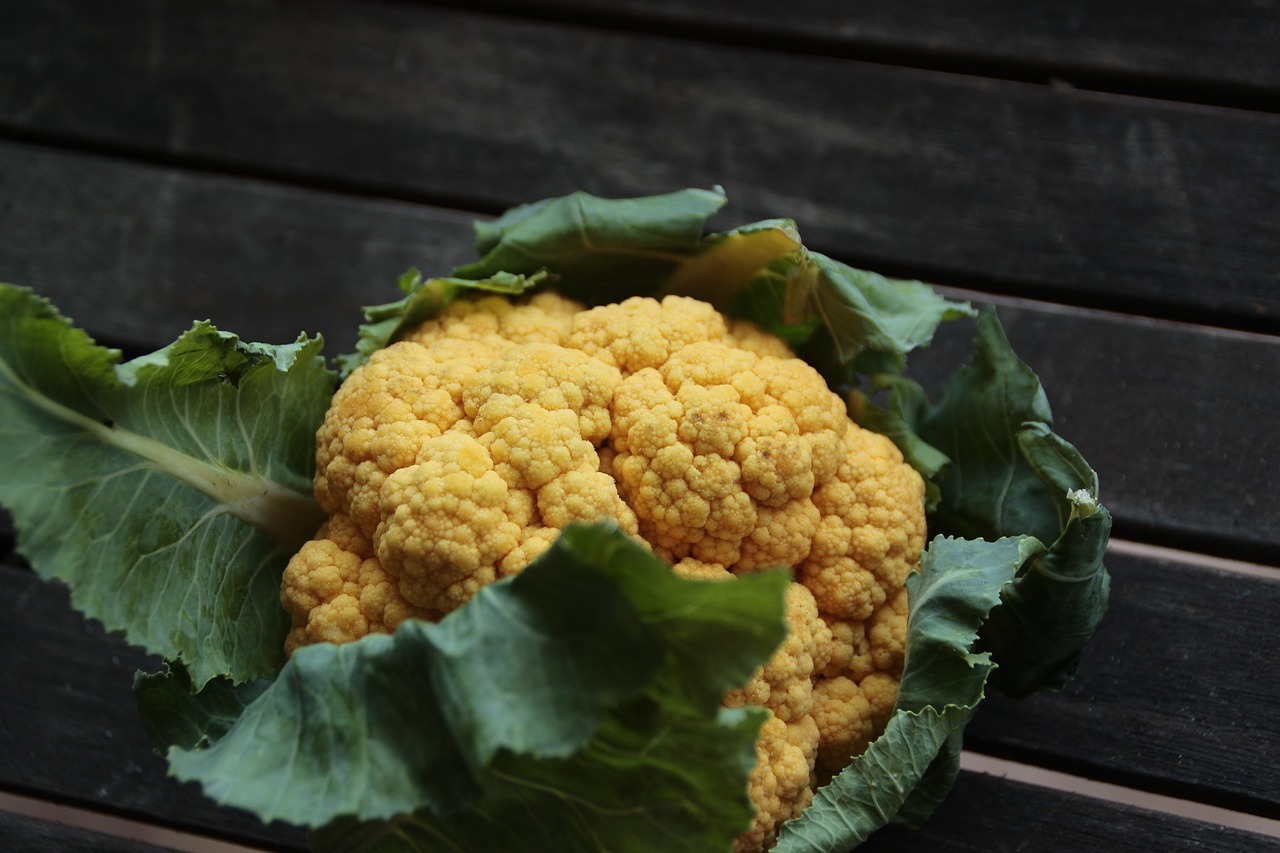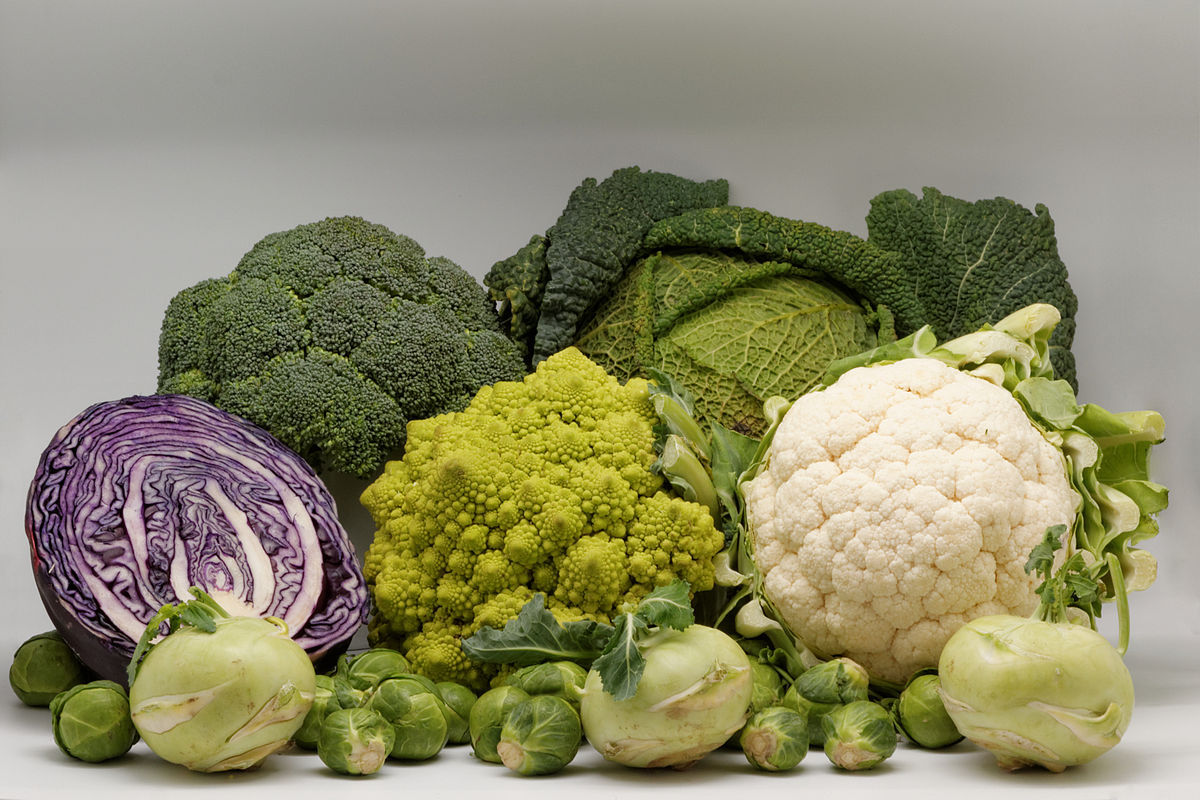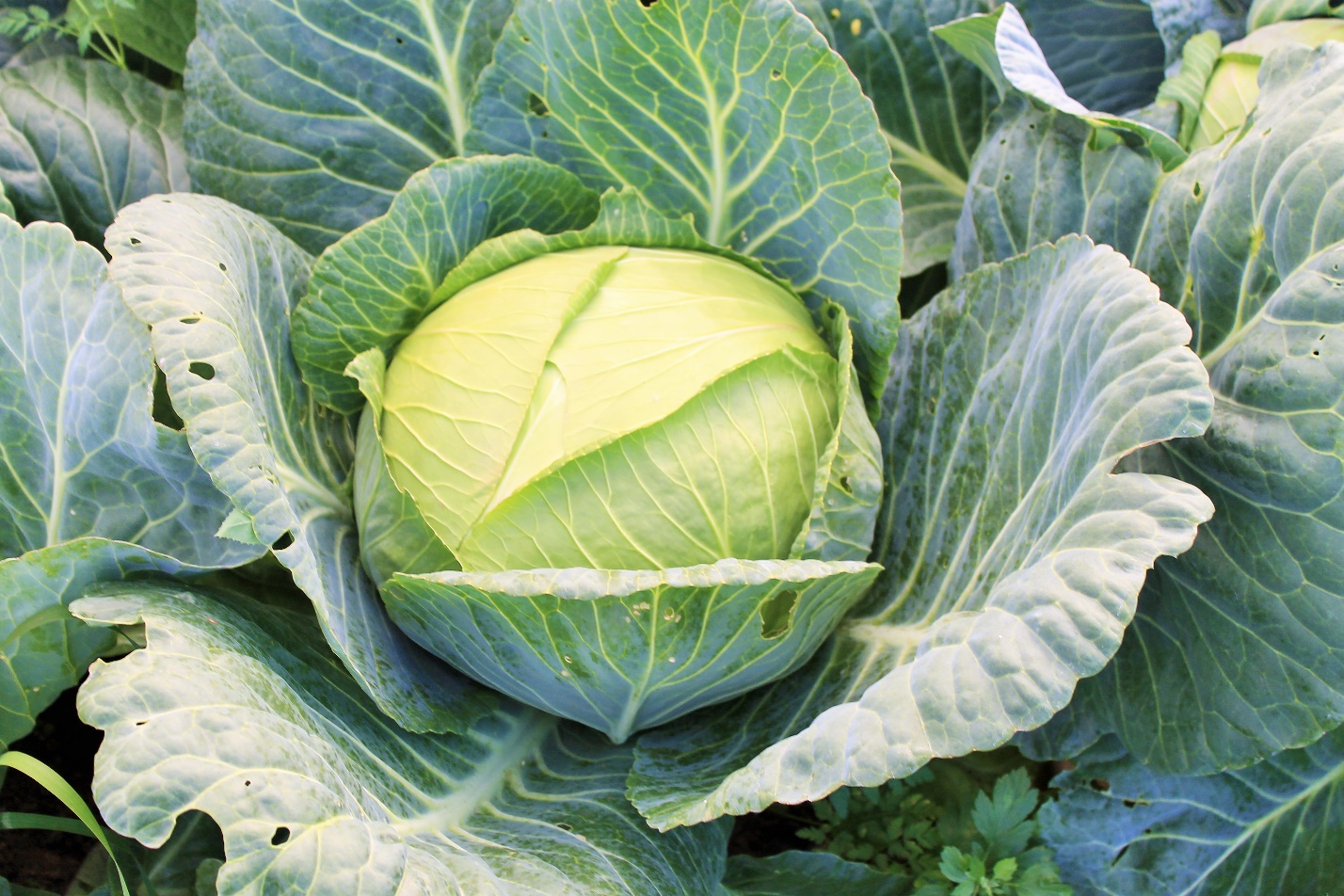Cauliflower has long been cultivated in the Mediterranean countries. In Russia, this vegetable crop appeared in the 18th century, but did not become widespread due to the increased requirements for growing conditions. And meanwhile, having a delicate taste, in its nutritional value, it is several times superior to other types of cabbage. No wonder nutritionists recommend including cauliflower dishes for baby and diet food. The vegetable is well absorbed by the body, and in terms of vitamin C content, it is 3 times higher than the white-headed look. The use of inflorescences minimizes the development of vitamin deficiency, intestinal and colds.
Content
Sowing time for cauliflower
You can grow cauliflower using seedlings or direct seeding into the ground. The seedling method allows to shorten the growing season by 1–2 weeks, which is very important for northern regions with short summers.
Cauliflower is an annual plant belonging to the cruciferous family. The heads are eaten - inflorescences, consisting of tightly pressed buds. The denser the inflorescences, the higher the quality of the vegetable. The heads can be not only white, but also yellow, green, purple. But the name of cabbage comes not because it is colorful, but from the word flowers.
Early varieties (Garantia, Rannyaya Gribovskaya 1355, Movir 44, Snezhok F1, Baldo F1, Alabaster F1) form heads 85–110 days after full germination. Seedlings begin to grow in early spring, from early March to mid-April. Fresh cauliflower from your garden can be consumed at the end of the first summer month.
Mid-season varieties (Parizhanka, Ondine, Goat Dereza, Otechestvennaya, Dachnitsa, Classic F1, Shambord F1) ripen in 110–135 days. They are sown for seedlings after tenths of April to early May. Sowing seeds of early and middle varieties in greenhouses is carried out immediately after the snow melts, in the second decade of April.
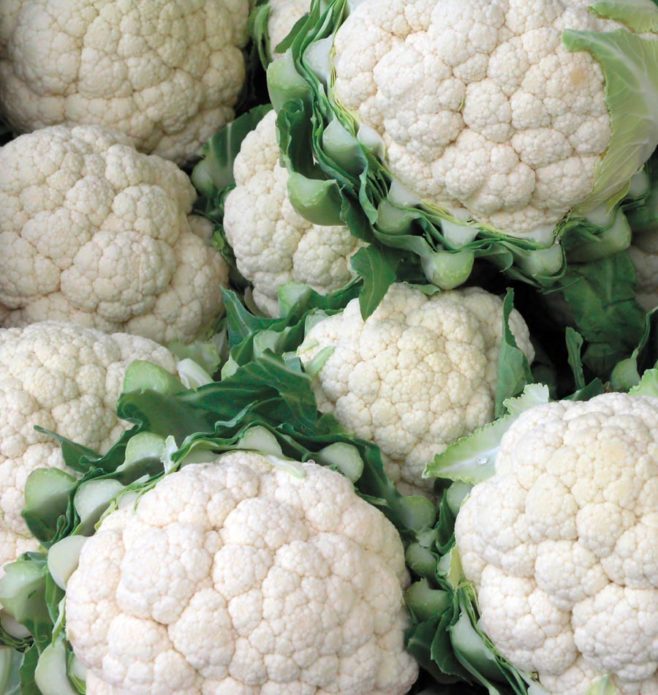
Amicable ripening of the medium variety Goza Dereza occurs 57–70 days after the emergence of sprouts
The growing season of late-ripening cauliflower (Sochi, Osenny Giant, Cortes F1, Skywalker F1, Fortrose F1) is 145–170 days, therefore it is grown only in the southern regions. In the central and northern regions, cabbage of these varieties does not have time to form heads before the onset of autumn cold weather. Sowing seedlings is carried out from late May to mid-June.
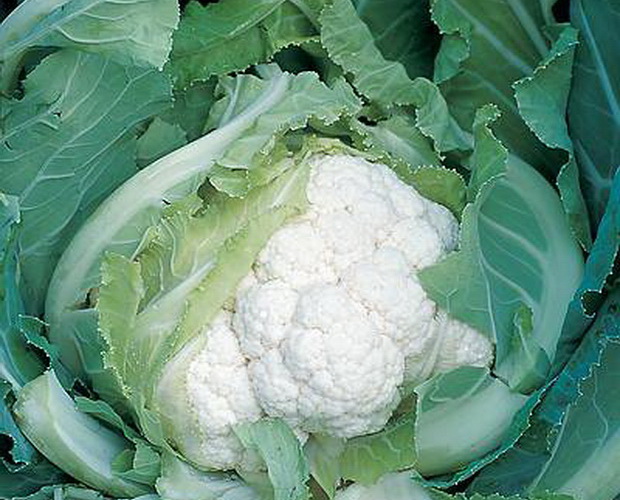
The late-ripening variety Skywalker f1 is grown in home gardens and small farms in regions with a warm climate
The determining factor influencing the sowing time of cauliflower is the weather and climatic characteristics. In the southern regions, sowing of early and middle varieties is carried out in mid-April, and in early May, late-ripening cabbage is sown. In the central and northern regions, seeds of early and medium varieties are sown in late April - early May. You can sow cabbage in the garden until the tenths of June, thus creating a real vegetable conveyor.
When determining specific sowing dates, they are guided by temperature indicators - the air should warm up to + 12-15 ° С. The more the earth warms up, the sooner friendly shoots will appear: when sown in soil with a temperature of + 10 ° C, the seeds germinate after 12 days, at + 18 ° C already for 4 days.
Video: sowing dates for cauliflower Ural and Western Siberia
Soil preparation before sowing
Cabbage grows well on loose sandy loam or loamy soil with a low level of acidity. Seedling soil is easy to prepare yourself from garden soil with the addition of humus and sand in a ratio of 1: 1: 2. Such a soil mixture should be disinfected with a solution of manganese or Fitosporin (1-2 drops per 1 liter of water). As a preventive measure for the development of keels, alkalinization of acidic soil is carried out with an infusion of ash (15 g \ 1 l).
Ready-made soil is also suitable for growing seedlings, which can be purchased at any garden store. It is based on a mixture of peat, earth and sand, supplemented with vermicompost and mineral components to improve nutritional properties. Such soil does not need to be disinfected.
A mixture of coconut fiber with vermiculite (3: 1), peat tablets, biocontainers can be used as a soil substrate for seedlings. In ready-made substrates, due to the presence of vitamins and biologically active elements, the energy of plant growth increases and pathogens are suppressed.
When planning to sow seeds directly into the ground, you should observe the crop rotation and not grow cabbage in the area where crucifers grew last season. The best predecessors are perennial legumes, potatoes, and root crops.
A bed for cauliflower is prepared in the fall. They dig up the soil, free it from weeds, fill it with humus (1 bucket / m2) and superphosphate (100 g / m2). Liquid Lime-Gumi (1 l / 10 l / m2) is introduced into acidic soil, which not only reduces the acidity level, but also increases fertility. At the beginning of the season, before sowing, the soil is loosened by adding 30 g of urea per 1 m2, and spilled with a solution of manganese of medium intensity.
Seed preparation and sowing
Seeds in the form of pills or plasma-treated seeds are sown dry without soaking and dressing. Regular seeds need to be prepared.
First, they are placed for 10 minutes for disinfection in a vessel with a 2% hydrogen peroxide solution, heated to +38 degrees, or in a 1% manganese solution. Then, after washing with clean water, they are subjected to hydrothermal treatment - they are kept in hot (+ 50 ° C) water for 15 minutes. At this temperature, fungal spores die without damaging the seed embryos.
The heated seeds are placed in a refrigerator for a day (+ 1–2 ° С). As a result of exposure of the seed to contrasting temperatures, the seedlings grow hardened and quickly adapt to environmental conditions. Then the seeds are soaked for 2 hours in a solution of the biostimulator Epin (2 drops \ 100 ml), Gumi (1 drop \ 100 ml), dried and sowed.
Things to Consider When Sowing Cauliflower Outdoors
Cauliflower is a thermophilic crop that requires a certain temperature regime to ripen. The cabbage head is formed only in conditions of stable heat from + 16 ° C to + 25 ° C. In case of intense heat above + 28 ° C, only the growth of green mass occurs. High air temperatures cause early disclosure of inflorescences and their transformation into flowering shoots. A significant cold snap also negatively affects the culture: at temperatures below + 5 ° C, the period of seed germination is delayed, the development of plants slows down, and when even small frosts of -1-2 ° C occur, the heads sensitive to cold become covered with glassy spots and rot.

The germination energy of cauliflower seeds will be higher if the sowing was carried out in well-heated soil.
Cauliflower also has increased watering requirements. In order for the ripe heads to be large, it is necessary to provide the culture with regular moisture throughout the growing season.
On the prepared ridge, rows are marked with an interval of 40 cm and seeds are laid out on the moistened ground to a depth of 1 cm every 5 cm.The crops are insulated with a film or a temporary greenhouse is made by pulling agrofibre on arcs. After seed germination, the seedlings must be ventilated during the daytime, and covered at night. Dense crops are thinned twice, as a result, the strongest plants are left on the garden bed with a distance of 60–70 cm between them.
Cultivation of cauliflower in a non-seedling way has a number of advantages: no time and effort is needed to care for seedlings, seedlings do not need to be transplanted, as a result, they form strong taproots that penetrate deeper into the ground and provide plants with the necessary nutrition and moisture. With the seedling method, the transplanted seedlings have a fibrous root system and develops in the surface layer of the earth.
Planting seedlings
Sowing seedlings is carried out in a common container or in separate cups. The boxes are filled with the prepared substrate, the barbs are marked at intervals of 3 cm and the seeds are laid out at a distance of 1 cm from each other to a depth of 1 cm. When sowing, 2-3 seeds are placed in pots each.
Lightly sprinkled with earth, the crops are sprayed with warm water and covered with a film. For seed germination, it is necessary to maintain a temperature of + 20–23 ° С. In a warm, humid environment, seedlings appear on day 4. Seedlings in common containers must be thinned out, increasing their feeding area to 2 cm, and cut off weak shoots in a pot, leaving one of the strongest.
After removing the film, the seedlings are transferred to a bright, but cooler place - lowering the temperature to + 10-12 ° C will help to avoid stretching and thinning of the sprouts. A week later, the seedlings are again transferred to a warm room (+ 20-22 ° C) and in the phase of 2-3 true leaves from the common box they dive into separate containers.
It is necessary to regularly moisten the plants and feed them three times during the seedling period. Nutrient supplements are applied under the root or when spraying in the first leaf phase, a week after the first feeding and before transplanting to the garden. A week before planting, the seedlings begin to harden, gradually increasing the time spent first on the veranda, and then under the open sky. Unhardened plants do not take root well and can die even with a slight cold snap.
Video: cauliflower seedlings - the subtleties of the process
Dates of planting seedlings
When prolonged heat is established outside, you can transplant the seedlings to a permanent place. In the southern regions, where the soil is already well warmed up in early spring, seedlings can be planted in mid-April, in the central and northern regions - a week or two later. The seedling period of early maturing varieties ends in 35–40 days, and from April 25 to mid-May, plants are planted. Following, from May 15, seedlings of mid-season cabbage move to a new place of residence. The transplant can be carried out until mid-June. Late ripening varieties are transplanted to the garden bed 30–35 days after sowing, at the end of June - mid-July.
The scheme of planting cauliflower in the ground
Cabbage beds should be placed in a well-lit area. Even a little shading can lead to slow plant development, sluggish foliage, and the head will not tie at all.
On the eve of planting, the plants are well moisturized. Planting is carried out in the early morning or evening, necessarily shading young plantings at first with the help of non-woven material. Wells are made in the garden bed and 15 g of superphosphate or a handful of ash are added to each, mixed with earth and moistened with 500 ml of water.
The plant is removed from a container with a soil clod, lowered into a hole, sprinkled and compacted. The optimal planting scheme for early varieties that form not very large heads is 40x50 cm. For medium and late varieties, a more sparse planting is needed - 50x70 cm. Under these conditions, the plants receive the necessary amount of light, moisture and nutrition and form large heads.
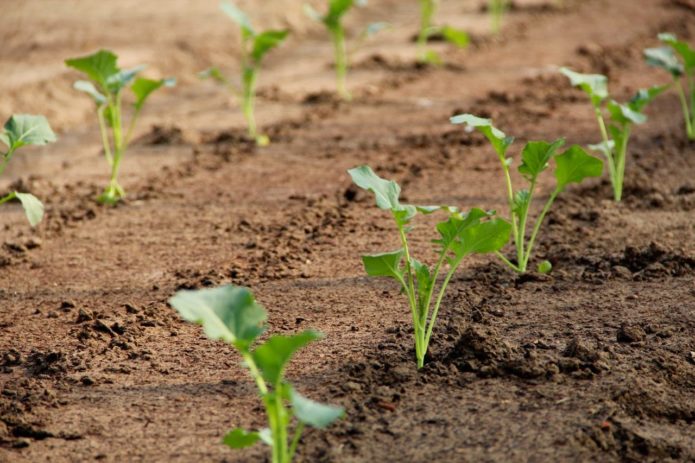
When planting in the ground, enough space is left between the plants - only in this case large heads will form
Video: planting cauliflower seedlings in the ground
Neighborhood with other cultures
Cauliflower gets along well with many crops in the same garden. Next to it, you can plant carrots, beans, beans, beets, cucumbers, onions, spinach, lettuce. Joint planting with other plants not only has a beneficial effect on taste, but also helps to resist numerous pests. Dill, planted between rows, improves the taste of cabbage and protects against aphid infestation. An excellent partner for celery cabbage, acquiring an additional aroma and driving away white beetles from the beds of butterflies. By compacting cabbage planting with onions, you can get rid of the cabbage fly. It has a good effect on cabbage and cucumber grass, scaring away snails with hard hairy leaves. For cabbage, the proximity of lettuce is also favorable, which protects it from the cruciferous flea.
The best neighbors for cauliflower are aromatic herbs. Sage, thyme, hyssop, mint, chamomile, with their strong odor, drive away harmful insects from the vegetable that lay larvae in cabbage leaves.
The cabbage patch can also be placed among tall plants, including near fruit trees, but plan the planting so as not to shade the cauliflower. She must receive a lot of light, otherwise her heads will be nondescript and small. But its joint cultivation with tomatoes, strawberries and grapes is undesirable. By choosing the right place and neighbors in the garden, you can get a good harvest of cauliflower.
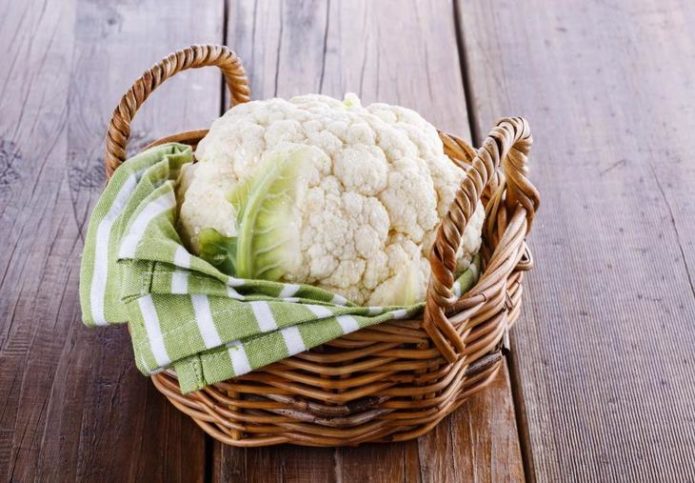
The right neighbors in the garden for cauliflower will allow you to grow healthy plants that form large heads
Reviews
I first grow flower seedlings and broccoli, and then plant them in the ground. I don't do anything special with it, I just water and feed it periodically.I plant it, immediately water it with a weak solution of manganese, and then after a week with urea. I also bought fertilizer specially for the Agricola cabbage, and fed them twice during the entire growing season. I planted the colored "Movir 74", and the broccoli "Tonus" ... These varieties were left with seeds from last year, and I also bought them - Coquette, Snowball 123, Snowflake ... now that's enough, there will be more. I plant a little, only 25-30 plants.
All success in the cultivation of c / k rests on the "three whales". Good organic dressing, neutral soil (close to it) and the introduction (mandatory) of boron-molybdenum micronutrient fertilizers. The first time when growing seedlings and then after rooting. Before tying a flower head, a flower must gather a powerful rosette of leaves ... Therefore, we must not forget that it is the leader in removing nutrients from vegetables, even surpasses cabbage in this matter, and it must be fed accordingly. I grew seedlings myself in the country. Sowing seeds in a mini-greenhouse under arcs was 7.04. Then, in the phase of 1-2 leaves, I must carry out one boring procedure - picking all the seedlings into 0.5 liter cups. And after that, the seedlings are in boxes in a stationary greenhouse, in my case a grape one. There, even at this moment, it is quite light and moderately cool. I prepare the soil in the fall on the basis of purchased high-moor peat and 2-3-year-old humus, with the addition (in autumn) of dolomite. After rooting on permanent residence, I add ashes to the beds (with loosening), and before setting, I add a complex macro with micro (for cabbage) to the beds. Boron and molybdenum are necessarily among the micro. When you cut off the head, if the stump is without voids in the cut, then the boron was in moderation. Otherwise, the head will not even be tied up or it will be ugly and bloom quickly. With a deficiency of molybdenum, young leaves are thin and long, like tails, and there will also be problems with tying.
... we love color very much. Here, too, I advise everyone to plant. From the early ones Snow F1 and Vinson F1 are good, good for freezing Frost. And this year I want to try the hybrid Yarik F1, it does not need heat treatment, you can eat it raw. The Dutch hybrids are good, there is a fairly large selection. And we cook this cabbage simply - we either fry it in vegetable oil alone or with an egg. Very tasty!
I have been planting Malimba for many years, Fremont. I definitely carry out 2 dressings with Solution, it contains both boron and molybdenum. I plant celery nearby from a cabbage fly and when planting seedlings I sprinkle the soil around the plant with earth or an initiative. The cabbage grows intact and has large heads.
I have been trying to grow cauliflower for several years. I planted the seedlings in the garden in early May, covered them with 5-liter plastic bottles. When the weather allowed, I took them off. The varieties were planted early, I don't remember the name. When the heads began to form, I broke the upper leaves to hide them from the sun. But still, the heads turned out to be loose and gray-green in color. In general, out of the 15 planted pieces, only 2-3 pieces grew, the rest were unusable.
I sow in early to mid-June with a subsequent transplant to permanent residence. Often I plant the grown cabbage at the beginning of the potato ridges, just by the time of planting there is not enough space, and after harvesting the potatoes, the cabbage is expansive.
I sow all cabbages without soaking the seeds in mid-late April in a greenhouse. They sprout up beautifully. When they grow up, I transplant them to the beds. The only problem: I cover it with lutrasil at first, because I have a cruciferous flea on my site.
… There are many reports that it is not possible to grow cauliflower, broccoli. From my own experience, I advise you to turn to the following when growing them. Completely "ditch" cauliflower in order of decreasing influence: 1. Strong deficiency in the soil of trace elements such as boron and molybdenum. 2. Complete "shallow" in terms of the availability of basic (N-P-K) nutrients in the soil. 3. Strongly shaded place or prolonged dry and hot (over +25) weather during the head tying phase. All other causes, including diseases and pests, can only reduce the yield, although in some cases very significantly. Usually the reason for failure on the first item, and especially due to boron. Boron deficiency is observed more often on corbonate or swampy soils, on acidic soils it manifests itself mainly after liming and in dry weather. And cauliflower is especially sensitive to its deficiency (just like beets and tomatoes). In this case, it does not form, and if it does, it darkens and acquires a brown color. The stalk (stalk) in the upper part near the head becomes hollow. The leaves are deformed, especially at the edges, losing their green color. With a deficiency of molybdenum, leaves are lethargic, ugly curved, narrow (like "tails"), chlorosis occurs between the veins.
Cauliflower is more demanding than white cabbage species for nutritional conditions, soil moisture and air. But subject to agricultural technology, using zoned varieties and taking into account the ripening time, it is quite possible to get a decent harvest of a delicate and very nutritious vegetable on your own personal plot.
